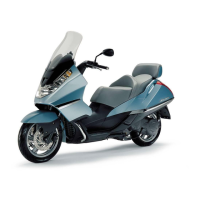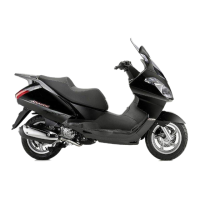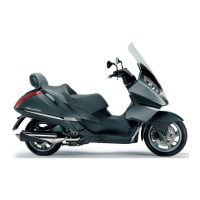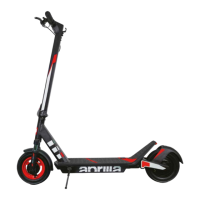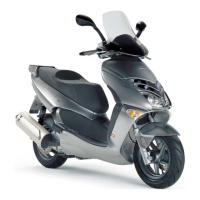ELECTRICAL SYSTEM
8 - 5
ATLANTIC 125 - 200
8.3. BATTERY
8.3.1. BATTERY
Battery rating: 12 V - 9 Ah
ACTIVATION AND MAINTENANCE
• Remove the battery from the vehicle, see
7.2.1.
• Remove the cell caps and the breather cap.
• Fill the cells with electrolyte fluid with 1.3 specific
weight.
• Charge the battery at slow charge rate (that is, ampere
rating should be 1/10th of battery rating) for at least 10
hours. Refit the battery just before delivering the
vehicle to end user, that is, when vehicle is expected to
cover some distance.
• Install the battery and connect the leads and the
breather hose.
• To avoid degradation in the wintertime or while the
vehicle is stored away, charge the battery for 10 hours
at regular intervals (at least monthly).
• Top up battery fluid level at regular intervals (at least
monthly). Top up with distilled water only.
INSPECTION
• In the event of abnormal operation, check the charge
system first, see
8.5.1.
• To check the battery,
• First remove the battery from the vehicle, see
7.2.1.
and proceed as follows:
Visually inspect for:
- apparent signs of sulphation (one or more cells will have
become white);
- check that fluid level is between the “MIN” and “MAX”
level marks;
- check the outer casing for leaks.
• Charge the battery at slow charge rate for at least 10
hours.
• After charging, measure electrolyte fluid density in
each cell using a densimeter. Change battery when
fluid density in any one cell is less than 1.26 or when
loadless voltage is lower than 12V.
RETURN UNDER WARRANTY
The warranty is invalidated when:
- the battery is damaged (dented housing, bent terminals,
etc.);
- the battery is affected by extensive sulphation (normally
due to improper installation procedure and/or use).
- electrolyte fluid level is too low (simply close the
breather hole with the rubber cap before shipping to
avoid this problem).

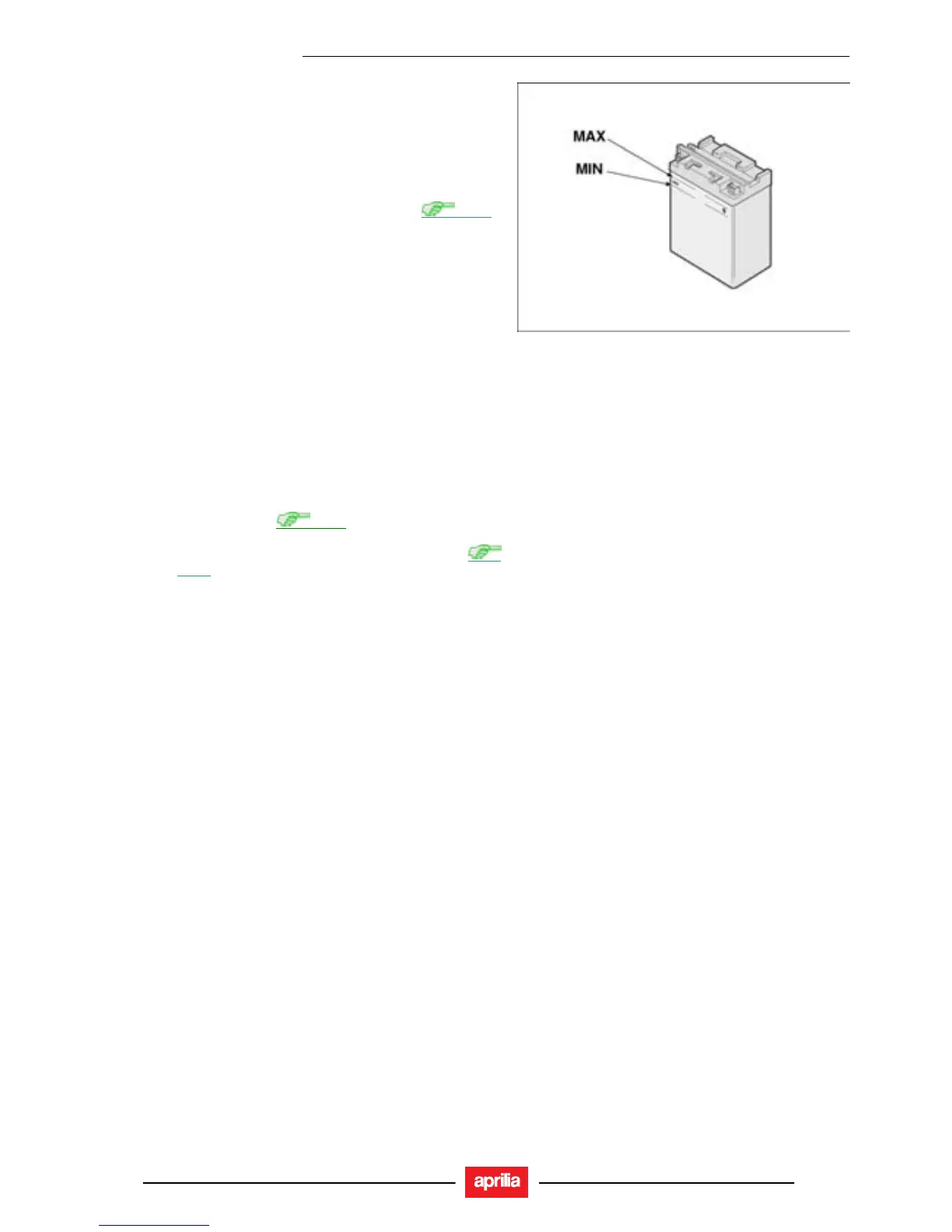